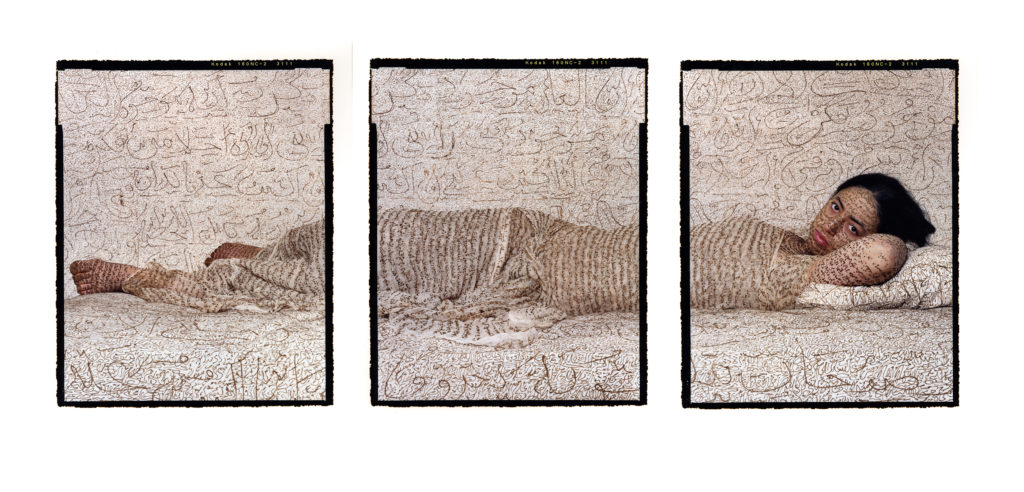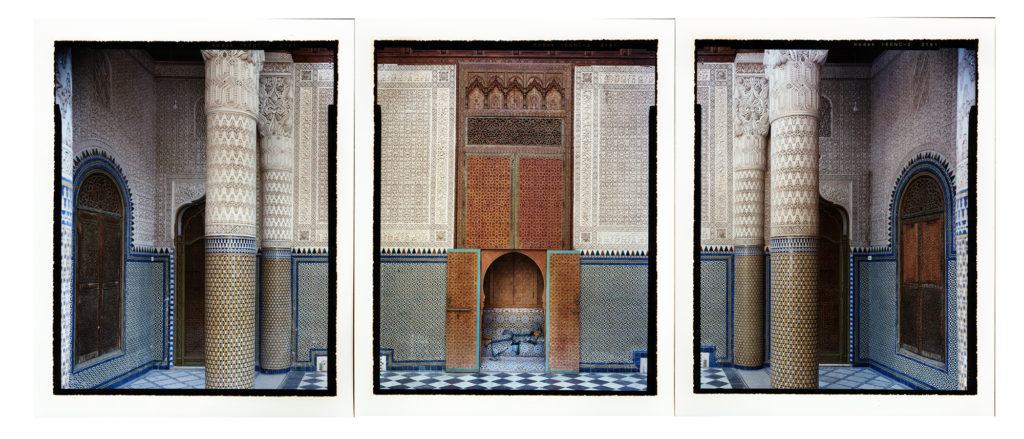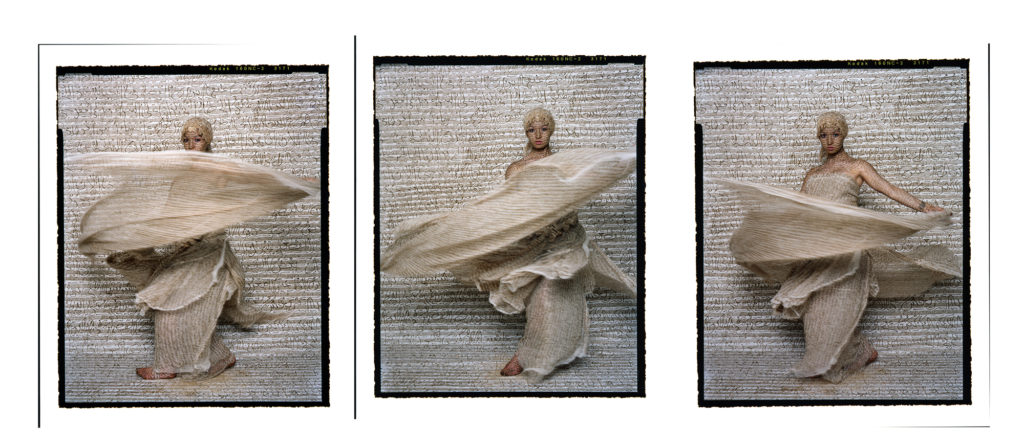Artist Lalla Essaydi Is Diverting the ‘Voyeuristic Gaze’ of Arab Women at Her First Show in Singapore


Artnet Gallery Network

Few artists mine the intersection of Eastern and Western cultural exchange quite like Lalla Essaydi. For one thing, she personally straddles geographical divides, having been born in Morocco and today living between there and New York. Much of her work also explores the capacity that images have to reduce society’s tendency to stereotype.
An exhibition of her photographs, “Lalla Essaydi: Truth and Beauty,” at Sundaram Tagore Gallery’s Singapore outpost—brings together photos from some of the artist’s best-known bodies of work: “Les Femmes du Maroc,” “Harem,” and “Harem Revisited.” Each series features depictions of Arab women in settings that reference art historical tropes and Orientalist symbols. Arabic calligraphy is written atop the images.
“My photographs of women restage and recast the nineteenth-century Orientalist imagery that continues to shape Western-world perceptions of the Arab world,” Essaydi tells artnet News. “My work depicts women who strike poses of odalisques and the figures in the harem scenes, then literally overwrite their bodies by applying hand-painted text to simultaneously divert the voyeuristic gaze and confront the confining cultural attitudes I experienced growing up.”
In the artist’s Les Femmes du Maroc series, for instance, women are photographed in odalisque poses and skin-colored clothing, referring to the fetishistic way Arab women have often been depicted throughout art history. In the sister series Harem and Harem Revisited, Essaydi’s models are set among ornate architecture and furniture decorated with the same pattern as their clothes, causing the women to literally blend into the background.

Lalla Essaydi, Reclining Odalisque. Courtesy of Sundaram Tagore Gallery.
“Her art essentially encapsulates the values of the West-East dialogue,” Tagore says. “Conceptually, she is challenging some of the issues raised by colonial cultural hierarchies. I would say not only that, in a comprehensive sense, her work depicts this intercultural discourse from an Arab perspective.”
This is Essaydi’s first exhibition since joining the gallery, which appears to be a natural fit given its mission of “examining the exchange of ideas between Western and non-Western cultures.”
Essaydi has exhibited in many prestigious institutions throughout Asia, the Middle East, Europe, and North America, but she remains aware of the different ways she’s perceived in each context. “Western viewers often see Arab women as ‘oppressed and marginalized,’ but in the arts, as well as many other areas, women have been significant participants in the dramatic transformations of the Arab world today,” Essaydi says. “Their art has done wonderful things to break down stereotypes while exposing people to new perspectives. It is not only the West that has been prevented from seeing Arab culture accurately. How we people in the Arab world see ourselves has also been affected by the distorting lens of Orientalism.”

Lalla Essaydi, Harem #6. Courtesy of Sundaram Tagore Gallery.
Today, Tagore says, Essaydi is “truly an international figure. In the East one might say that the Orientalist viewpoint stemming from colonialism was part of the cultural context and that perhaps her audience there tends to understand her work from a far more personal angle. That happens to be a very attractive quality for an Eastern viewer, since they emotionalize the context. Her collectors approached her work with a deep sense of colonial understanding and therefore reverence,” he says. “For them it was not only a conceptual and intellectual exercise but a personal investigation.”

Courtesy of Sundaram Tagore Gallery.
“Lalla Essaydi: Truth and Beauty” is on view through December 15, 2018, at Sundaram Tagore Gallery’s Singapore outpost.
